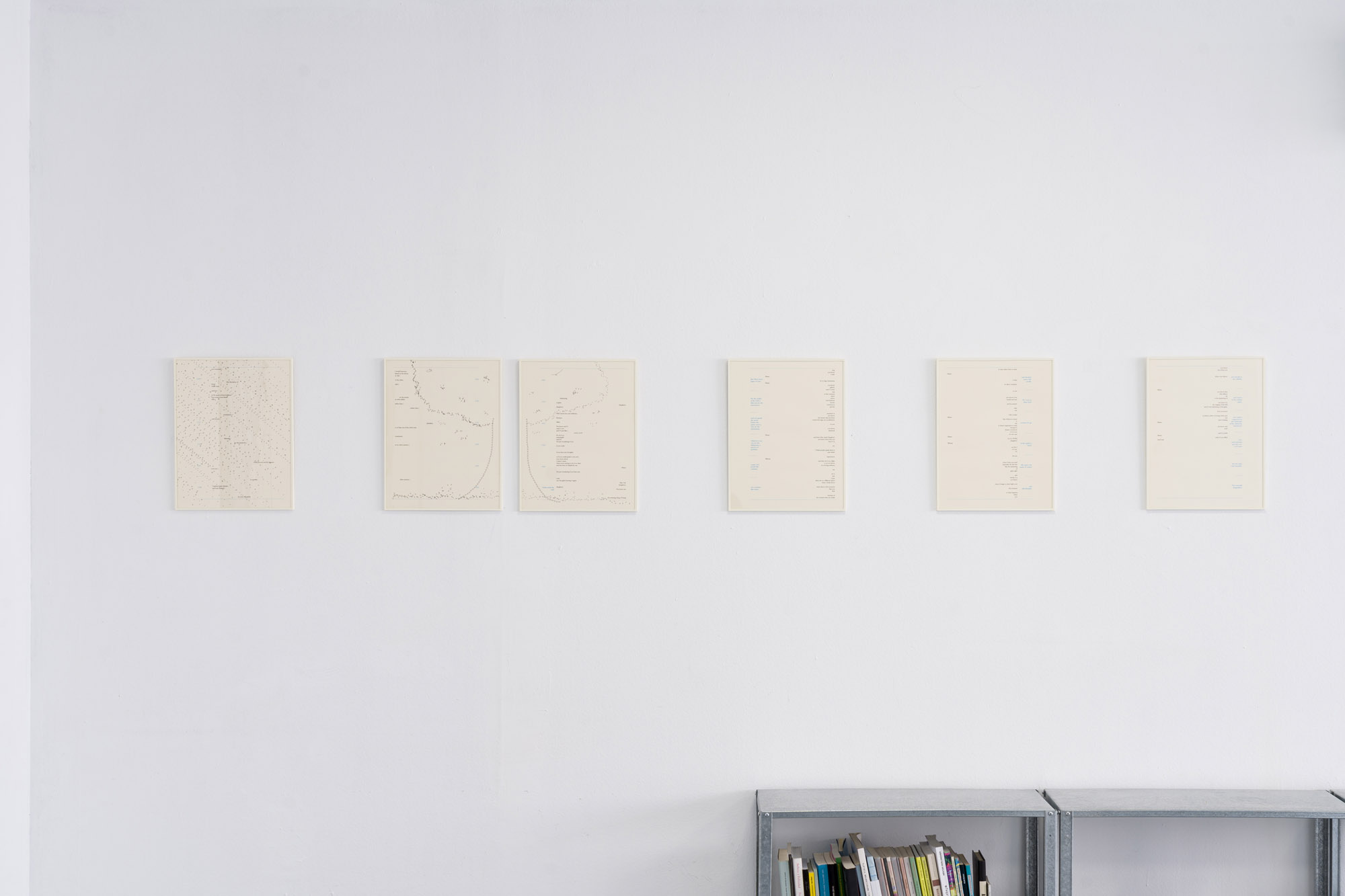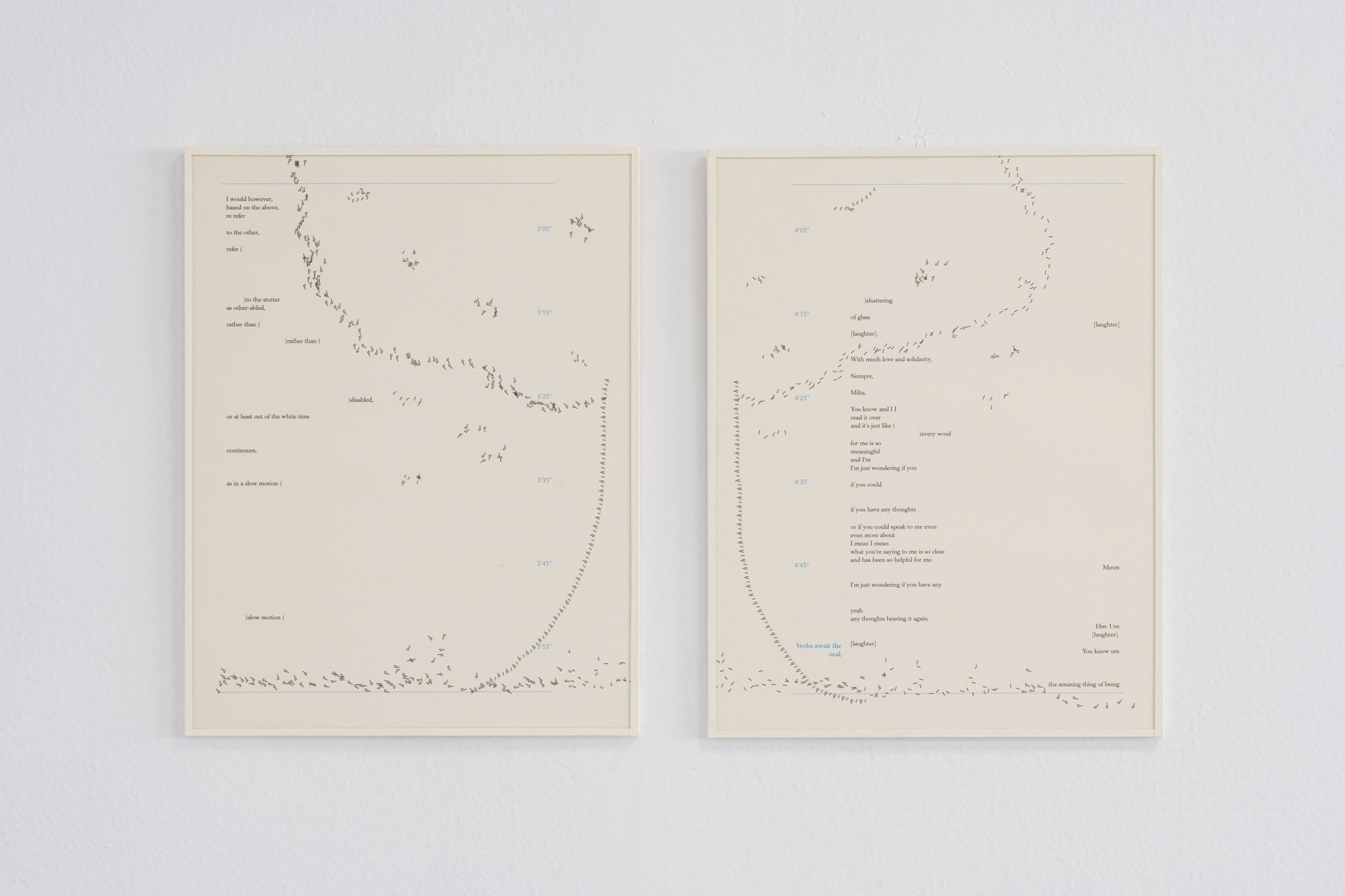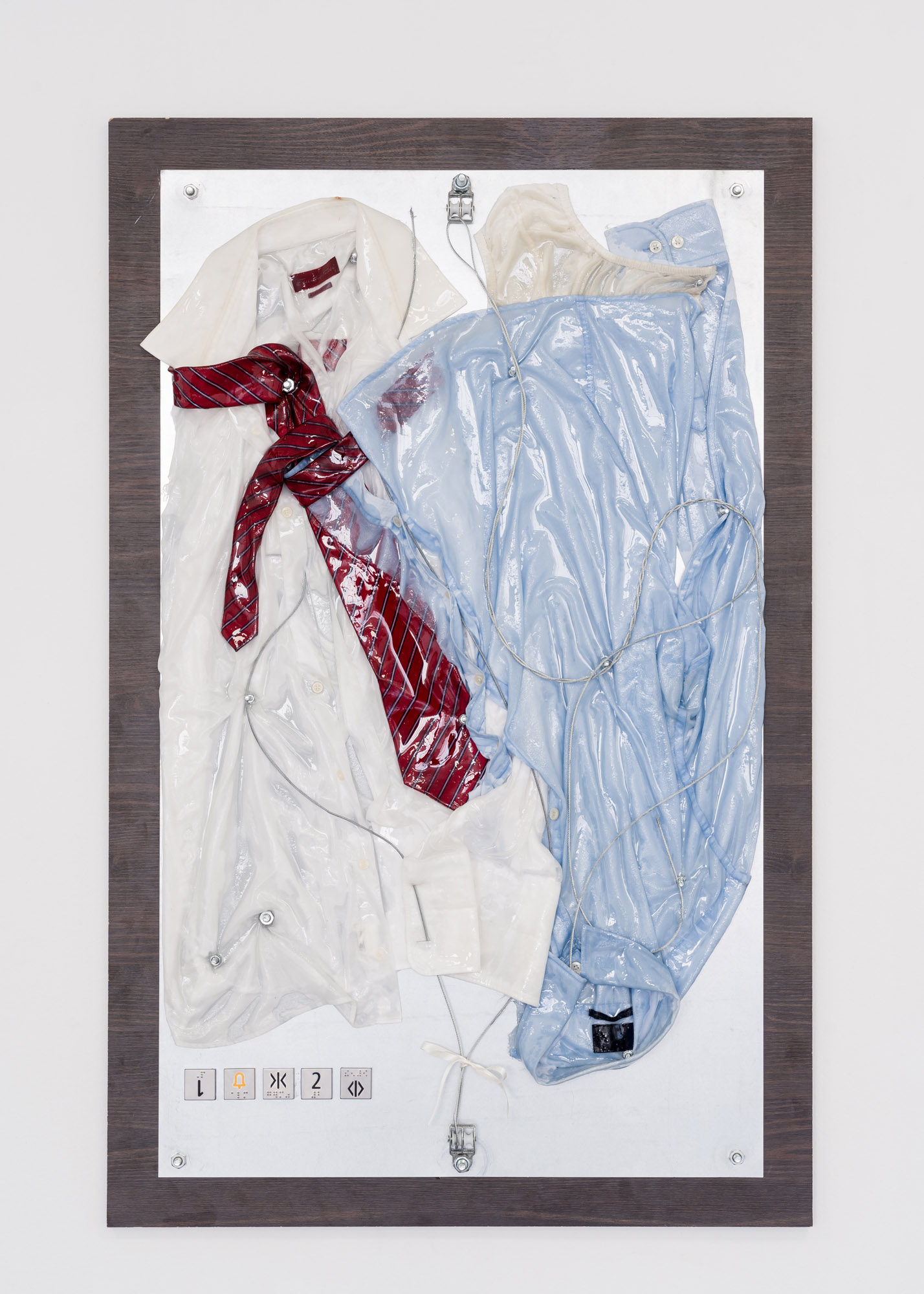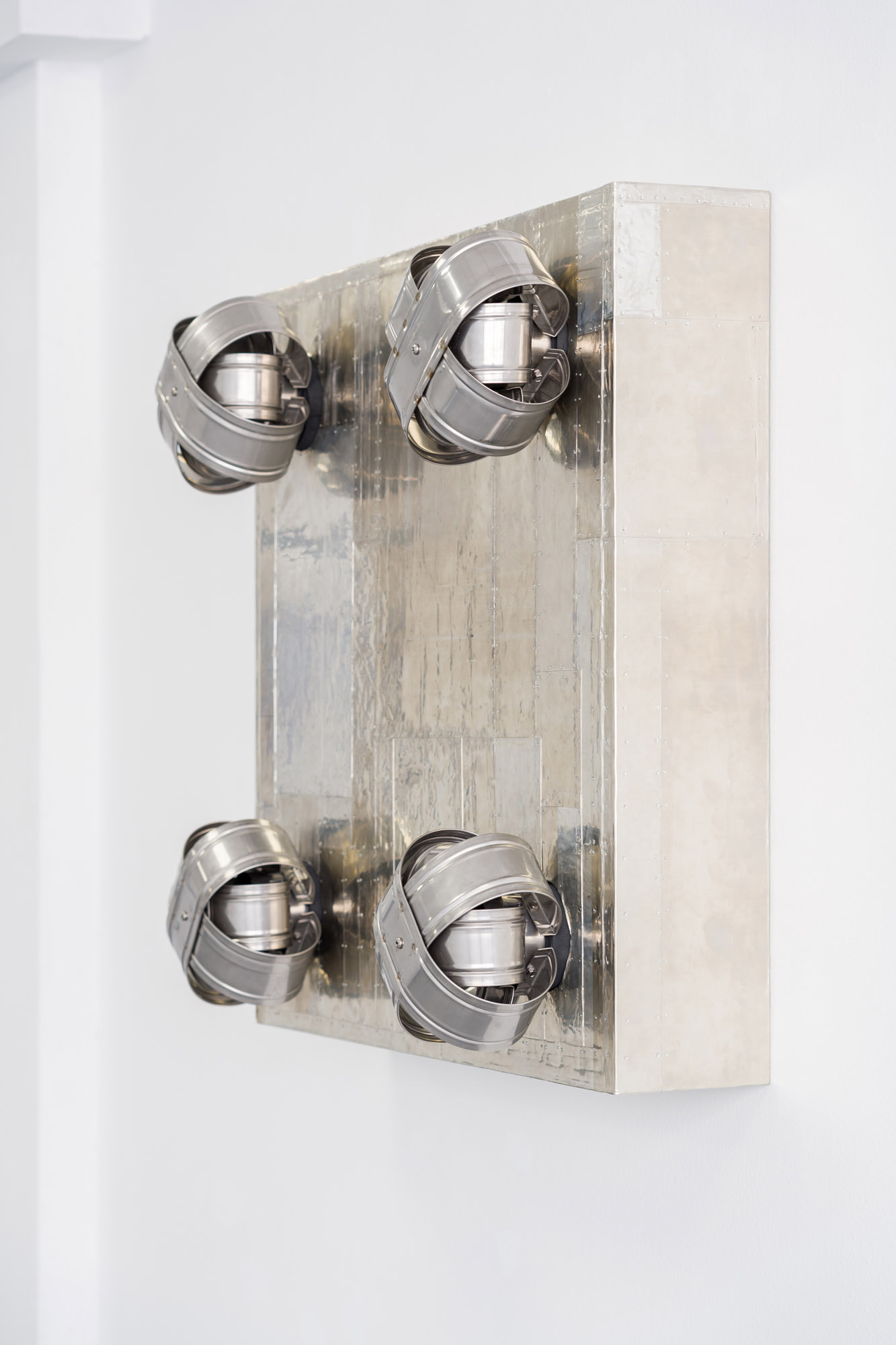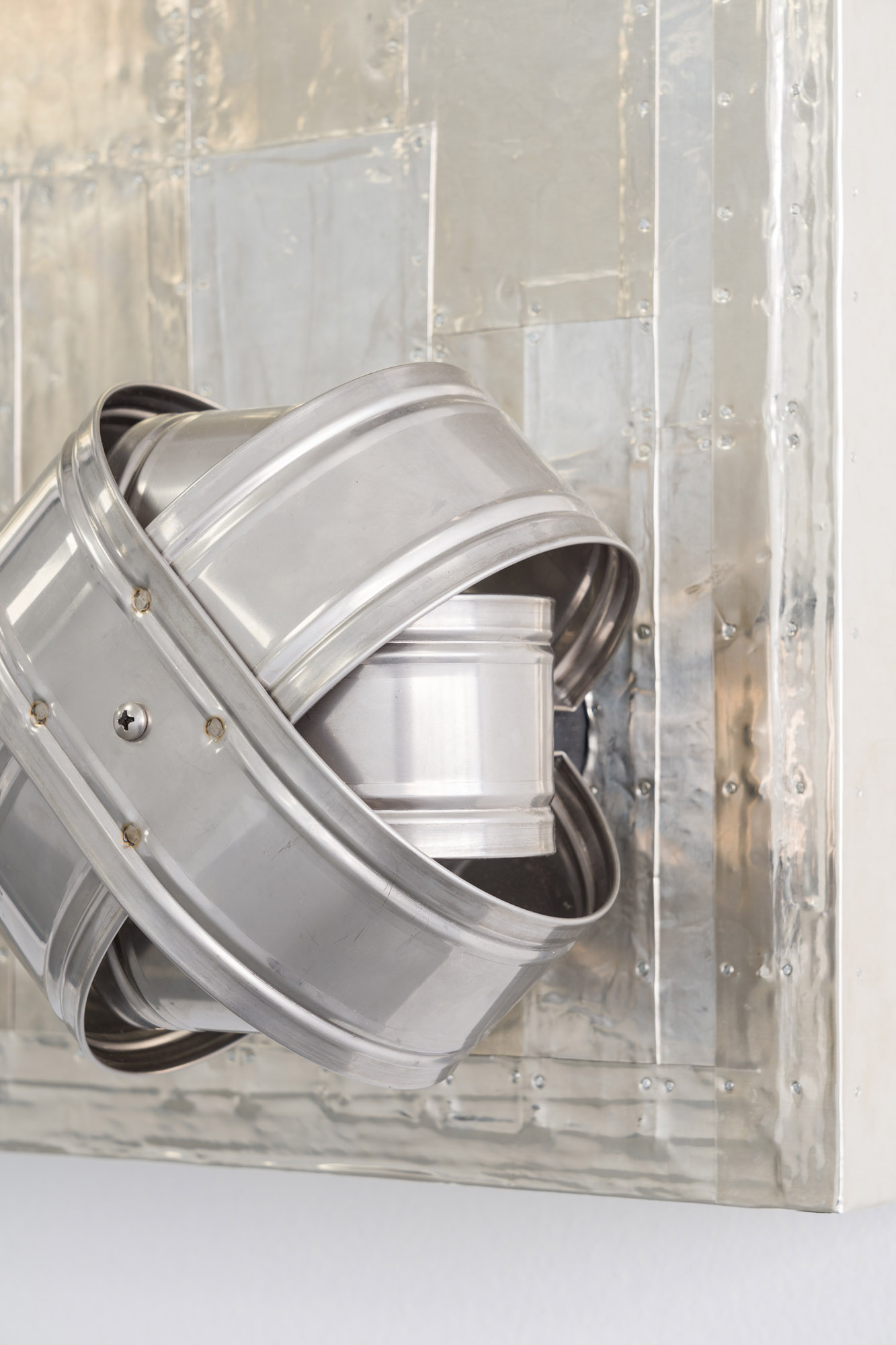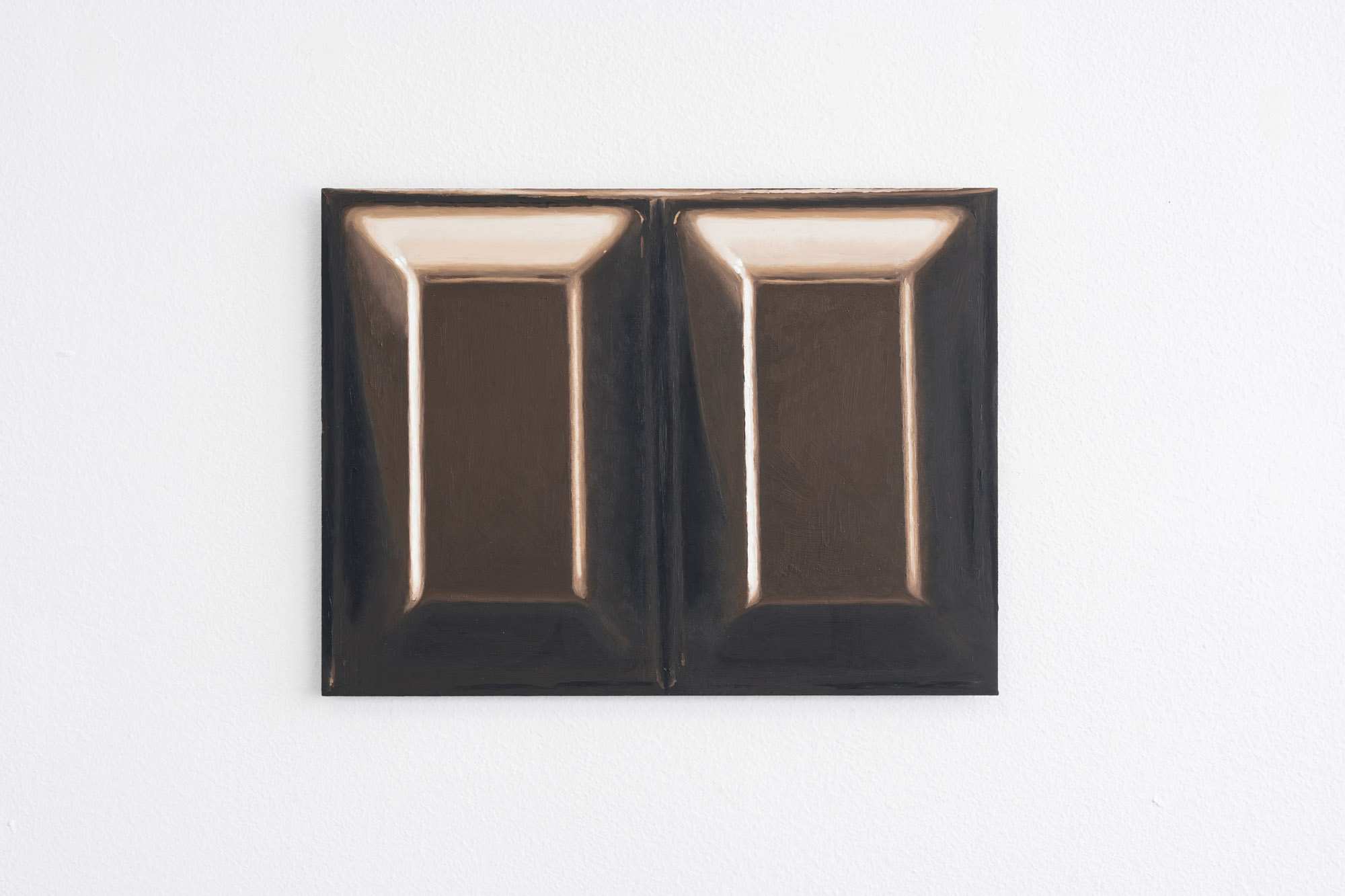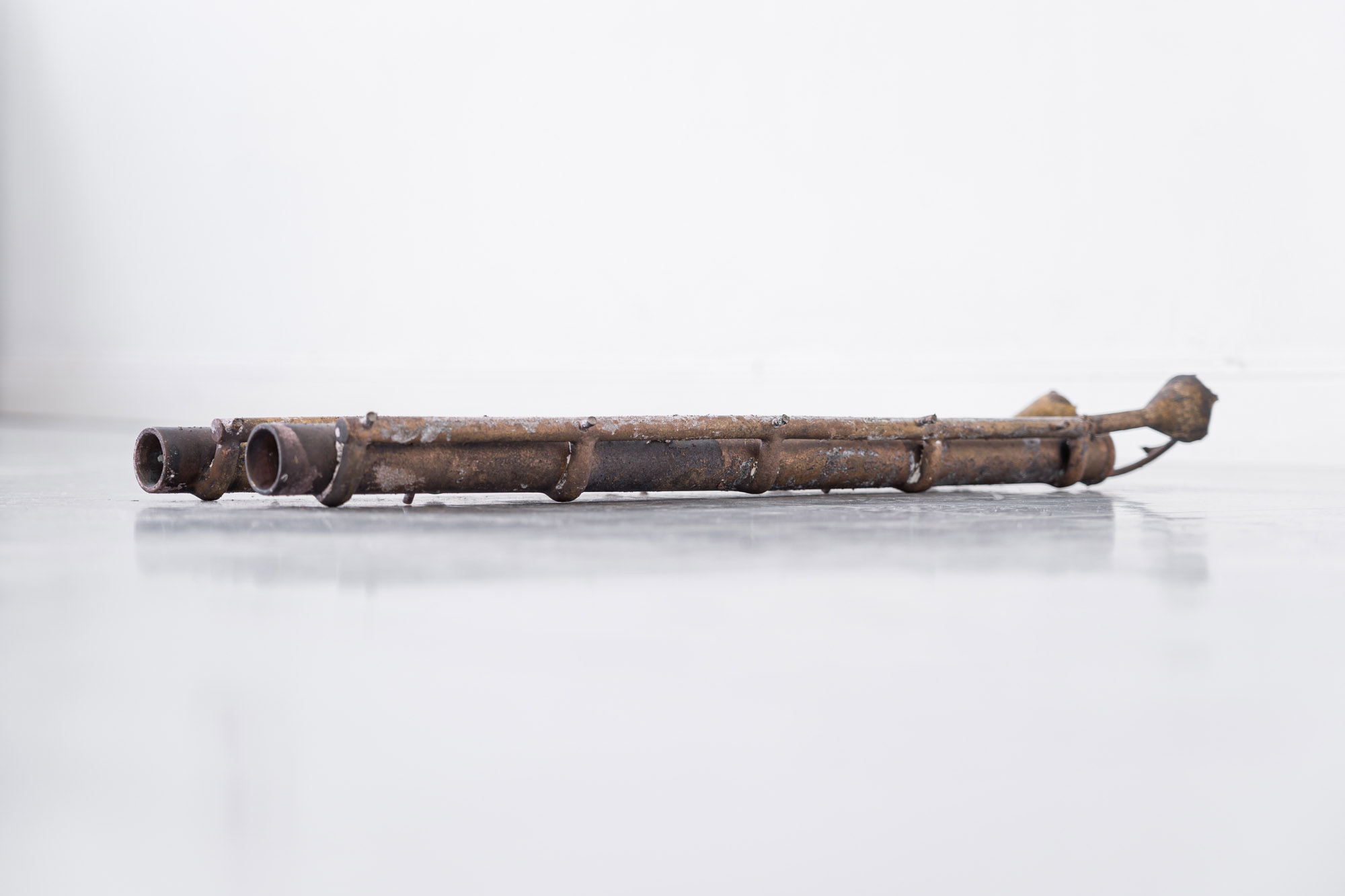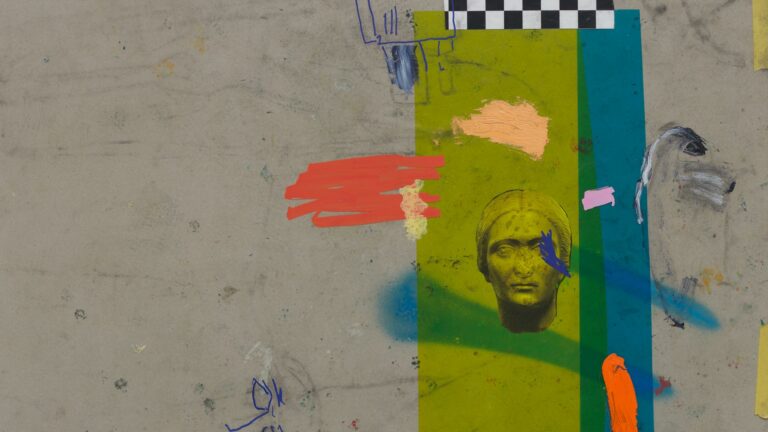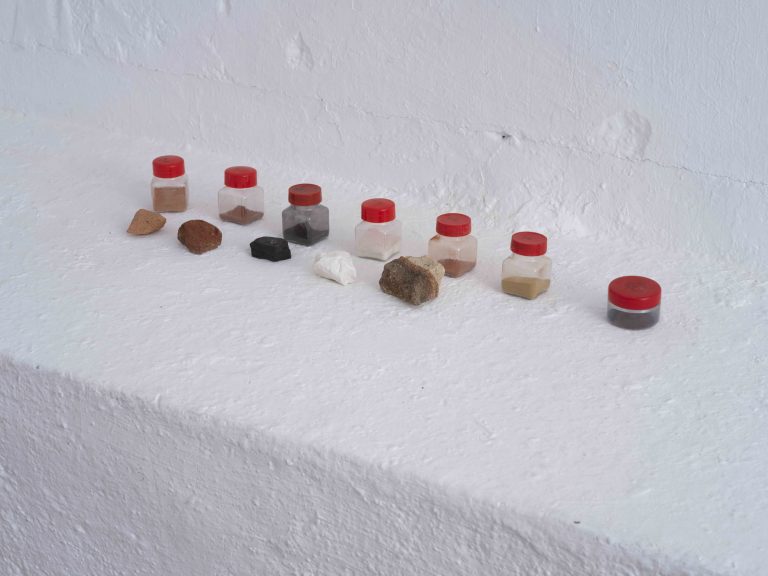Artists: Jesse Chun, Jjjjjerome Ellis, Alberto Vallejo and Beatriz Ortega Botas, Nour Mobarak, Shaun Motsi, K.R.M. Mooney and Álvaro del Fresno / Opening event with readings and sound by Ben Nsi Ngua, Elijah Jackson and mhm, mhm
Exhibition title: landscape hot mic
Curated by: Leto Ybarra
Venue: Juf, Madrid, Spain
Date: February 18 – March 31, 2023
Photography: all images copyright and courtesy of the artists and Juf, Madrid
landscape hot mic amplifies the atmospheric conditions of speech and language. The hot mic brings to the forefront that which is not part of restrained speech, the environment and the apparent error. It alludes to the capacity to emit and preserve the voice; as well as to the phonetic dimension of language, the contingencies it entails, its “translation” into written text and the rematerialization of the visual through sound.
Through what she describes as an act of unlanguaging, Jesse Chun’s work addresses the ideologies, institutions and Eurocentrism that are embedded and reproduced in the English language, opening it up to a continuous production of meaning. In scores for unlanguaging, the artist (mis)uses an English stencil to create abstractions out of the Roman alphabet, the standard script of the English language. The illegible masses of drawing and text aim to create new cosmologies away from a selective reality dictated by institutional interests.
JJJJJerome Ellis calls clearings the spaces he unpredictably creates in speech. He explains that if fluent speech were a path through a forest, stuttering would be a clearing where the path temporarily disappears and another kind of language flows underground. In Milta, the clearings are introduced through a system of notation in which, free of grammatical and syntactical constrictions, phonemes cross the pages and point to visual figurations. Ellis wonders how to collect in language the imprint of music and of the racialized and disabled body. Through melisma (the gathering of several sung notes into a single syllable), the word leaves semantics to the margins and becomes something else. With melisma, the syllable uses its own sound potential to resist the erasure by which conventional signification replaces the experiential phenomenon.
Nour Mobarak understands the voice as a site of socio-political negotiations. In Phoneme Movement, the artist herself exploits the particularity within each phoneme, emphasizing how despite being decontextualized, phonemes always carry personal experience and the contingency of history. Influenced by her position as a Lebanese vocalist and immigrant, Mobarak explains that the sounds we emit with our voices and the way we perceive the voices of others, are strongly conditioned by the techniques and styles imposed by the linguistic frameworks in which we acquire speech.
In Shaun Motsi’s Untitled two grid cells are made from chocolate bar pieces. Using a modern artistic visual structure historically linked to the rejection of narration and discourse in the artwork, the artist alludes to Blackness and to the infinite extension of a complexity that resists being simplified and dismembered. Chocolate refers to the processes of abstraction that operate in every metaphor and the violence they can entail. Metaphors isolate and sublimate a single attribute of a concept or of physical reality: from a set of attributes, only those that serve to establish a relationship of similarity are chosen, keeping out those that do not fit.
The chimney caps that conform Pomp and circumstance are designed to prevent the wind from altering the chimney draft and to ensure that the air flow is always from the inside out. Their shape, a result of their function, has an ornamental, baroque appearance. The box in which they are installed is covered with goldsmith’s tin foil. Beatriz Ortega Botas and Alberto Vallejo approach pomp as a formal and linguistic resource that serves to isolate a voice from an inhospitable context. The ornate appearance of these caps refers to the eloquence that can be found in fossilized formulas and rigid poetic devices. In language too, rhetorical devices can seal the voice so that it flows and remains untroubled by the airs of its environment.
First functioning as an idiophone, the sculptural forms that make up Channel in C, hold the capacity to emit, to have a voice and participate in public life. K.R.M. Mooney inverts this object through bronze casting, and everything that is part of this process (oxidation, the sprues and gates, the supporting architecture) remains in the work; giving the same status to the process as to its initial function. Channel in C also refers to Terry Riley’s 1964 minimalist composition. In this piece of music, the melodic content of each of its numerous parts is predetermined, however, the open architecture of the composition allows semi-randomness to negotiate with fixed forms, generating a singular piece in each performance.
Known for having musically attended the elevators of skyscrapers, MUZAK generated a “background” presence that reconfigured the acoustic landscape of capitalism. If the background is characterized by passivity towards it (by its lack of interest, monotony or simplicity); Álvaro del Fresno’s A-MUZAK (2023) refers to Terre Thaemlitz’s piece with the same title, in which the artist perverts the MUZAK by claiming the background also as a political place. Through the sonic dimension of elevator music, Álvaro articulates a visual language capable of intervening in “the background”, producing a counter-plane in which to mobilize experiences of passivity beyond the categories of visibility/invisibility.




